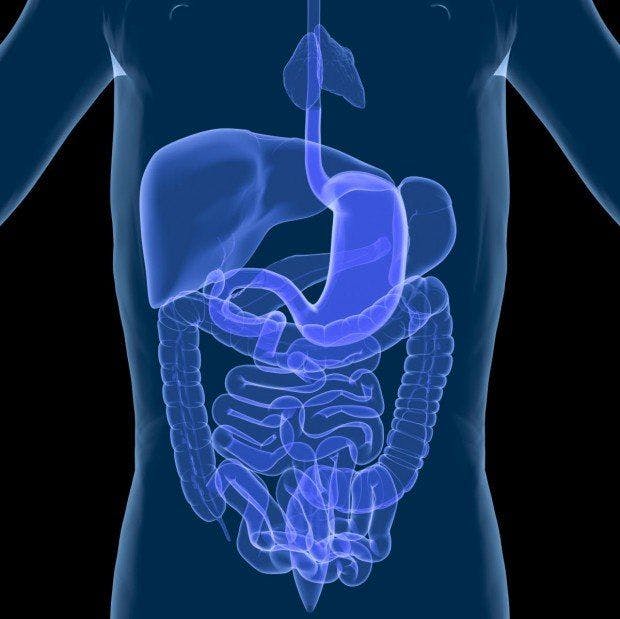Ingredient Spotlight: Soy Protein
As an ingredient with well-documented nutritional attributes, soy protein can play a role in combating childhood obesity.
Obesity levels have dramatically increased over the past three decades and remain alarmingly high among children and teens. As an ingredient with well-documented nutritional attributes for weight management, soy protein can play a role in combating this present-day crisis.
The following is a review of the latest supporting data, as well as an overview of soy protein’s nutritional benefits.
Background
For more than 5000 years, soy has been a fundamental part of the diets of millions of people worldwide, with its earliest uses tracing back to ancient China. Since landing on U.S. soil in the early 19th century, soy, and its production and distribution, has seen a dramatic transformation-from first being recognized as a low-cost, high-protein feed ingredient for livestock farmers, to now being widely commercially available in thousands of soy food products for human consumption. Driven in part by FDA’s backing of a soy heart-health claim in 1999, the popularity of soy food products has spiked over the past two decades.
The soybean is a legume from the botanical family Leguminosae. It is not only low in saturated fat and cholesterol-free but is touted as a nutrient-dense food, partly due to its high proportion of protein content, or soy protein. Nearly 40% of soybean calories are derived from protein, compared to 20%–30% in other legumes. As such, increasing protein content with soy protein can create healthful options by displacing calories derived from sugar and fat.
Impact on Obesity
Latest figures show that one-third of U.S. children and teens are overweight or obese.1 Perhaps most worrisome, though, is that up to 80% of overweight children will likely remain overweight into adulthood.
While obesity is a very visible condition, it can be accompanied by the development of unseen and asymptomatic (but serious) health conditions in childhood, including high blood pressure and cholesterol. If left unaddressed, these effects can have a lifelong impact, leading to diseases like type 2 diabetes, heart disease, and some cancers.2
Protein Nutrition
Childhood is a particularly important time to optimize nutrition and instill good dietary habits. During a growth spurt, a child’s body has a strong drive to build fat-free mass.3 Protein is the primary tissue-repair and growth nutrient in the body, and high-quality dietary proteins with the appropriate amino acid pattern are needed to stimulate protein synthesis and other metabolic pathways. Soy protein is easily digested and one of few widely available vegetable sources that provide all nine essential amino acids in the appropriate amounts, making it a noteworthy source of protein to help support healthy growth and development during this critical time.
Currently, more than a quarter of a child’s recommended caloric intake is consumed in the form of snacks. On average, children consume 2-3 snacks per day,4 or nearly 700 calories.5 For this reason, considering the nutritional value of snack selections is critical to promote healthy weight and diet in children.
Soy and Satiety
The consumption of a healthful snack can serve a role in nutrition but also satiety. A study presented at Experimental Biology 2014 showed that replacing one daily afternoon snack with a high-protein snack containing soy resulted in statistically significant reductions in hunger ratings from adolescents, compared to a similar setting where subjects received a high-fat snack or no snack.6 Satiety can support weight management by helping to control caloric intake. When the feeling of fullness is reached faster, fewer calories may be consumed at the next meal or over the course of a day.
Consumption of high-protein snacks also correlated to a reduction in unhealthy evening snacking in the study. Both outcomes reiterate the potential for soy protein to replace calories derived from sugar and fat.
Soy and Heart Health
While many studies have documented the benefits of soy protein in helping to manage body weight, less emphasis has been placed on soy’s heart-health benefits.
A study presented at the American College of Cardiology in March 2014 found that roughly a third of children, ages 9 to 11, have borderline or high cholesterol.7 In children and teens, replacing animal protein with soy protein as part of a low-fat diet has been shown to decrease total cholesterol and LDL cholesterol.8 Soy protein, as part of a diet low in saturated fat and cholesterol, has been shown to reduce the risk of heart disease and can be an effective tool for children at risk of developing heart disease.9–10
From a more holistic standpoint, proper nutrition, underscored by adequate macronutrient and micronutrient intake, can impact the broader baseline health of a child. More specifically, a child’s diet can have significant consequences on immune health.11 Deficiencies, as well as excesses of nutrients, can adversely affect immune cells. This being said, it is equally important to address malnutrition and over-nutrition-both potentially reversible
conditions-in order for children to thrive.
Application
Value, improved taste, convenience, and nutritional benefits are just a few characteristics that consumers demand in today’s marketplace. While further studies are needed to better understand the full nutritional potential of soy protein, the ingredient has demonstrated practical benefits that make it a viable option for supporting new food choices. To meet these demands, soy protein products are versatile and can deliver a vast and broad spectrum of functional solutions-including solubility, emulsification, and viscosity-all while delivering great taste.
References
- American Heart Association. “Understanding Childhood Obesity: 2011 Statistical Sourcebook,” 2011.
- NF Krebs et al., “Assessment of child and adolescent overweight and obesity,” Pediatrics, vol. 120 (December 2007): S193–S228.
- K Hall et al., “Dynamics of childhood growth and obesity: development and validation of a quantitative mathematical model,” The Lancet Diabetes & Endocrinology, vol.1 (October 2013): 97–105.
- Consumer research conducted by Ipsos/Observer for DuPont Nutrition & Health.
- C Piernas et al., “Trends in snacking among U.S. children,” Health Affairs, vol. 29, no. 3 (March–April 2010): 398–404.
- Leidy H et al. “The effects of a high-protein afternoon snack containing soy on appetite control, satiety, and subsequent food intake in young people,” The FASEB Journal, vol. 28, no. 1 (April 2014): 381.7.
- T Seery et al., “Lipid profiles performed at the time of routine physical examinations in 9–11 year olds within Texas Children’s Pediatric Associates Primary Care Pediatric Clinic,” Journal of the American College of Cardiology, vol. 63, no. 12 (April 1, 2014).
- D Weghuber et al., “Effect of 3-month treatment of children and adolescents with familial and polygenic hypercholesterolemia with a soya-substituted diet,” The British Journal of Nutrition, vol. 99, no. 2 (February 2008): 281–286.
- K Widhalm et al., “Effect of soy protein diet versus standard low fat, low cholesterol diet on lipid and lipoprotein levels in children with familial or polygenic hypercholesterolemia,” The Journal of Pediatrics, vol. 123, no. 1 (July 1993): 30–34.
- H Jacques et al., “Influence of diets containing cow’s milk or soy protein beverage on plasma lipids in children with familial hypercholesterolemia,” Journal of the American College of Nutrition, vol. 11, supplement 1 (June 1992): 69S–73S.
- RK Chandra, “Nutrition and the immune system: an introduction,” The American Journal of Clinical Nutrition, vol. 66, no. 2 (August 1997): 460S–463S.


.png&w=3840&q=75)

.png&w=3840&q=75)



.png&w=3840&q=75)



.png&w=3840&q=75)




















